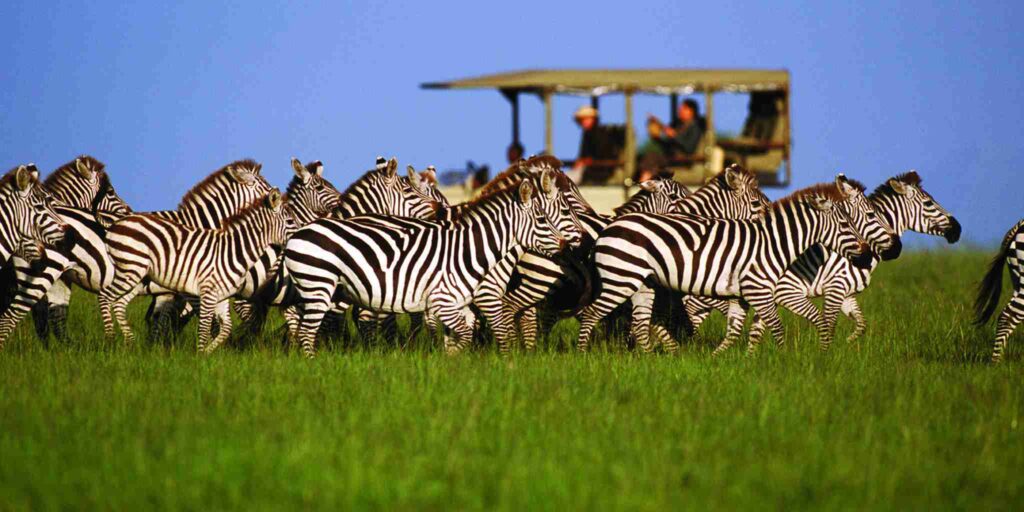Serengeti, Tanzania travel tips
Category
Categories
Popular Articles

## Overview of the Destination
The Serengeti National Park in Tanzania is a dream destination for many travelers due to its rich wildlife diversity, vast landscapes, and iconic status as a World Heritage Site. From witnessing the Great Wildebeest Migration to catching a glimpse of the Big Five (lions, leopards, elephants, buffaloes, and rhinos), the Serengeti offers an unmatched nature and wildlife viewing experience. It’s worth visiting for its unique blend of stunning scenery, magnificent wildlife, and ancient cultures.
## Best Time to Visit
The Serengeti’s location near the equator provides consistent weather throughout the year. However, the peak season for wildlife spotting is during the annual Great Migration from late November to August. If you’re fond of bird watching, the best time is from December to April.
Off-season benefits include fewer tourists and lower accommodation prices. Major events like the Serengeti Cultural Festival in November offer an immersive insight into local Tanzanian culture.
## Climate & What to Pack
Most of the Serengeti experiences a semi-arid climate. Daytime temperatures range from 20°C to 30°C, and nights can cool down to 15°C. It’s advisable to pack light, breathable clothes for the day, and warm layers for the cooler nights. Don’t forget your sun hat, sunglasses, and sunscreen. Pack a lightweight raincoat for sudden showers, comfortable walking shoes, and binoculars for wildlife spotting.
## Getting There
The nearest international airport to the Serengeti is Kilimanjaro International Airport. From there, you can take a smaller, domestic flight to various airports directly in the Serengeti. Alternatively, shuttle services and private cars are available but can take up to eight hours. Visitors need a visa for Tanzania, which can be obtained on arrival for most nationalities.
## Getting Around Locally
Getting around the Serengeti National Park is usually done through guided tours that offer transportation in 4×4 safari vehicles. Small charter flights are used to get between different parts of the park. Renting a car to self-drive isn’t recommended due to challenging terrain and restrictions within the park.
## Safety Tips
While the Serengeti is generally safe for tourists, it’s important to follow guides’ instructions and park rules to ensure safety, especially around wild animals. Avoid walking around at night and always keep your belongings secure. As is common anywhere in the world, there might occasionally be petty theft or pickpocketing in crowded places.
## Top Things to Do & See
The Serengeti offers a range of activities from traditional wildlife safaris, bird-watching tours, hot air balloon rides, and cultural visits to local Maasai villages. Be sure to make a visit to the world-famous Ngorongoro Crater and Olduvai Gorge, the cradle of humankind.
## Where to Stay
The Serengeti offers a range of accommodation from luxurious safari lodges to budget campsites. For mid-range budgets, try the Serengeti Serena Safari Lodge or the Mbugani Tented Camps. For a luxury experience, Four Seasons Safari Lodge or Singita Sabora Tented Camp are unbeatable. Budget travelers can consider public campsites like the Seronera Campsite.
## Food & Local Cuisine
Tanzanian cuisine varies widely, with influences from native African, Arab, and European cultures. Be sure to try local delicacies like ugali (maize porridge), nyama choma (grilled meat), and pilau. Dining in the Serengeti often comes as part of the lodge or camp package and tends to include a variety of international and local dishes.
## Cultural & Practical Tips
The currency is the Tanzanian Shilling, but USD is also widely accepted. English and Swahili are the official languages. Tanzanians are typically amicable and respectful; polite greetings are appreciated. Standard British-style three-pin plugs are used, and voltages are 220-240V.
## Sustainable or Responsible Travel Tips
Remember that you’re visiting a delicate ecosystem – stick to the designated paths, don’t litter, and respect the wildlife by maintaining a safe distance. Consider staying at eco-lodges that prioritize sustainability and employ local staff.
## Personal Travel Tip
Finally, keep in mind that patience is key when it comes to wildlife viewing; nature operates on its own schedule. Open yourself up to the pure magic of the Serengeti, and you’re sure to have an unforgettable experience.










